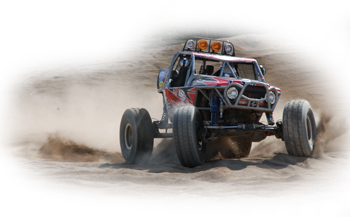Look out for these top oil pressure robbing situations!
Oil Slosh
The oil in your engine's oil pan can easily slosh about as your car moves. During dynamic driving, this oil slosh can leave your pickup uncovered and sucking air. To prevent this damaging situation, choose an oil pan that works to control oil slosh. If you have room consider an oil pan with a narrow deep sump to keep the oil under control. If ground clearance is a concern, opt for a pan with some good baffling and maybe an Accusump Oil Accumulator.
Low Oil Volume
Running low on oil can easily cause gaps in oil pressure for your engine. While your engine is running, it is pulling oil out of the pan to fill your engine lowering the oil level in the pan. If the initial volume of oil in your pan is not adequate for your engine, the oil pickup can become uncovered and lose pressure while driving. Combat this issue by being sure your engine's oil volume is correct. If you have any oil coolers or other accessories, they need to be considered in the volume. Use your dipstick to be sure the oil level is sitting at the right height in the pan. Need more volume to accommodate your engine? Get a high capacity oil pan to add volume to your system.
Oil Turbulence or "Windage"

Windage is the turbulence in the air within the crankcase. Each time a piston comes down, the air under is pushed into the crank area. Each time the piston goes up, air is being pulled behind it. At high RPM, this turbulence can aerate the oil draining through the crankcase and sitting in the pan, and in some cases lead to foaming. Aerated and foamed oil can cause oil pressure issues among other things.
To address windage issues use a windage tray. The tray is installed under the crank and directs draining oil to the oil pan's sump, away from the crank and windage occurring around it. In addition, the windage tray helps keep oil in the sump from splashing back into the crank. Want more protection? Add a crankscraper with your tray to further clear the oil around the crank and direct it into the sump.
Extreme Angles or Forces

If you are sliding, climbing, jumping, or doing anything else that applies significant force to your engine you could run into oil pressure issues. The hot oil in your oil pan gets tossed around violently as you are driving. For a moment; imagine a pail of water sitting in the drivers lap, as a Rock Climb Truck rocks back and forth at an extreme angle. The same thing happens to the oil in the engine's oil pan in these situations. To protect you from constant low and no oil pressure situations that can cause engine damage, we recommend both a performance oil pan and our Accusump oil accumulator.
For the oil pan we recommend using either a deep style wet sump oil pan or a dry sump system. The deep style pan allows oil to stack up over the pickup giving it less room to move. A dry sump system pumps all the oil out of the pan and stores the it in a separate baffled tank that ensures oil doesn't move away from the oil supply pickup.
The Accusump System is recommended for those situations when the oil in the pan just can't be expected to stay put. The Accusump will hold a given amount of pressurized oil in reserve and discharge it when there is an interruption in the normal oil supply.
Dry Starts
Engines that are run routinely will keep a good film of oil on their internal components between uses. This film of oil allows the engine to spin over and start before oil pressure is established without the risk of engine damage. However, for vehicles with engines that sit between uses, like race cars, classic cars, and specialized equipment, this film of oil can dry out as oil drains from the engine and leave the engine unprotected. Over time this dry starting of an engine can cause significant engine damage.
The best way to prevent dry starts is to pre-lubricate your engine before starting. By filling your engine's passages with pressurized oil, you will not only be restoring the film of oil on your engines moving parts, but also preventing any lag in oil pressure when starting; by priming the oil passages.
To easily pre-lubricate your engine every time you start it, use our Accusump oil accumulator. The Accusump holds a reserve of pressurized oil gathered from when your engine was running last, to pre-lube your engine before start up.
Have an new engine that needs pre-lubing? Take a look at our Fresh Engine Pre-oiler. The Fresh Engine Pre-oiler is filled with oil through the top cap, then pressurized with your shop air line for simple pre-lubing.
